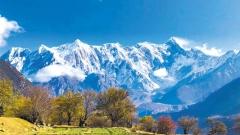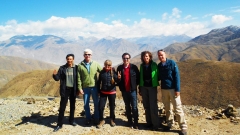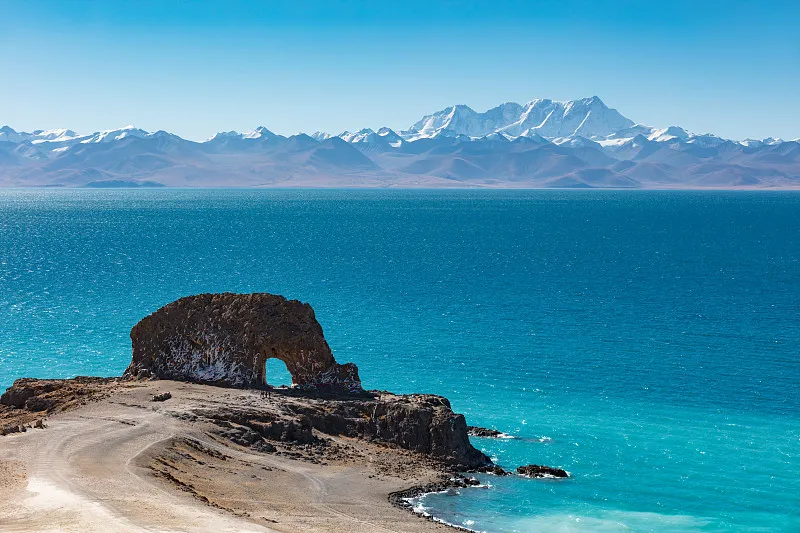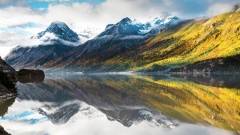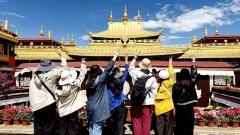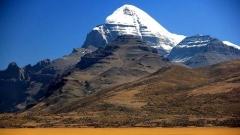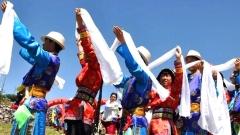Where exactly are the Himalayas located, and how can travelers best experience them? This guide answers that question in practical, travel-ready detail for international visitors: which countries the range crosses, the iconic places to see from each side, the best seasons to visit, how to travel over and above the mountains, and suggested itineraries and tips to make your Himalayan trip unforgettable.
The Himalayas Are Not a Single “Place”
The Himalayas are a mountain system, not a single mountain. The range contains dozens of sub-ranges, the world’s highest peaks (including Mount Everest) and countless valleys, passes and micro-climates. This means your experience will vary dramatically depending on which country and which sub-region you visit. Expect stark alpine deserts on the Tibetan Plateau, verdant rhododendron forests in Nepal’s mid-hills, and the mossy, monsoon-drenched slopes of Bhutan’s lower altitudes.
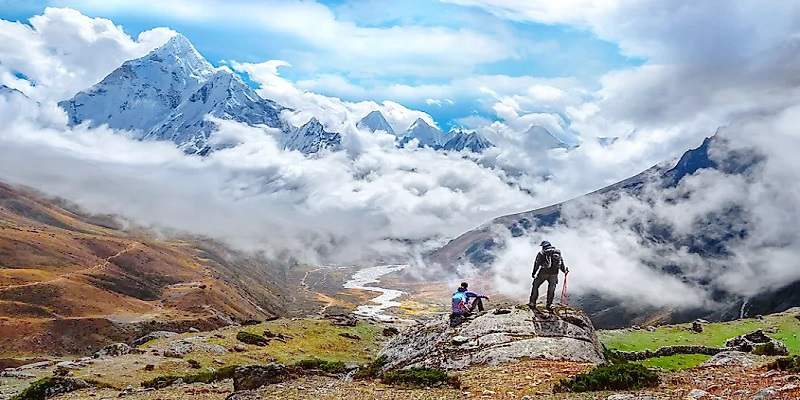
Mount Everest and the Himalayas
Mount Everest is the Himalayas’ most famous summit — the planet’s highest point. The mountain sits on the border of Nepal and the Tibet Autonomous Region (China). In December 2020 Nepal and China jointly announced a revised official elevation for Everest; the updated figure is widely reported and used by guides and travel operators. From the Tibetan side you’ll find the classic, monumental pyramidal silhouette rising above high, windswept plateaus; from the Nepalese side the approach is greener and more forested lower down, with dramatic vertical ridges. For most travelers who want a dramatic Everest experience without technical climbing, the Tibet-side Everest Base Camp (northern EBC) provides a high-altitude viewpoint that you can reach largely by vehicle and short walks, while Nepal’s Everest Base Camp trek is a legendary multi-day hike through Sherpa villages and terai-to-alpine transitions.
Which Countries Contain the Himalayas?
The Himalayan mountain range stretches across five principal countries in South Asia: India, Nepal, Bhutan, China (Tibet Autonomous Region), and Pakistan. Together they form a vast arc running roughly west–east that separates the high Tibetan Plateau to the north from the fertile plains of the Indian subcontinent to the south. This dramatic geography creates astonishing variety: jagged alpine peaks, deep river gorges, high-altitude deserts, subtropical foothills and rich cultural mosaics of monasteries, temples and mountain communities.
Each country offers a different “face” of the Himalayas. Nepal is renowned among trekkers; Tibet (China) gives vast, austere plateau panoramas and Tibet-side views of Everest; Bhutan offers a quieter, spiritual Himalayan experience; India provides accessible hill-station charm and Buddhist monasteries; and Pakistan’s northern ranges give you big, rugged, less-crowded mountain scenery.
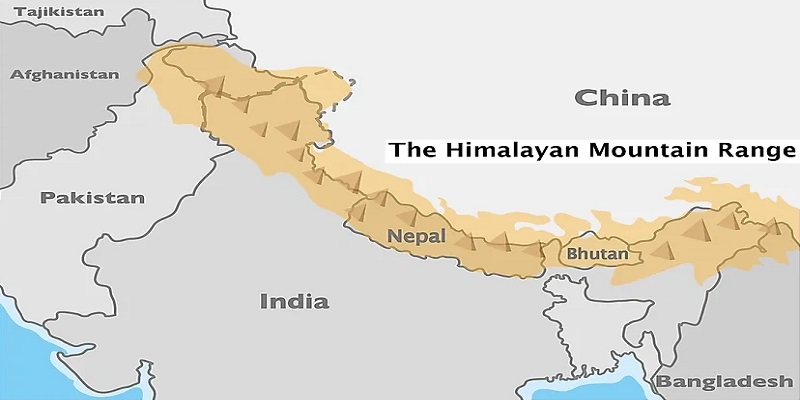
China (Tibet): the longest Himalayan stretch and plateau panoramas
Tibet hosts one of the longest continuous stretches of the Himalayas. The Tibetan Plateau offers “big sky” panoramas: glaciers, stark ridgelines and sacred peaks like Mount Everest (visible from the Tibetan side) and Mount Kailash in the west. Key Tibetan highlights include Lhasa (for culture and monasteries), the Everest Base Camp region near Rongbuk Monastery, Nyingchi (for views of Namcha Barwa and subtropical-to-alpine transitions) and Ngari (the remote home of Mount Kailash). Overland drives across Tibet—especially routes that cross from Lhasa toward the west—are some of the most dramatic ways to see the range.
Mount Kailash in Ngari (western Tibet) is particularly special: a sacred mountain for Hinduism, Buddhism, Bon and Jainism. Pilgrims perform the Kailash kora — a multi-day circumambulation — while modern travelers can experience the spiritual atmosphere, remote landscapes and high-altitude deserts of western Tibet.
Nepal: the trekkers’ paradise
Nepal is synonymous with trekking. The Himalayas here contain eight of the world’s highest peaks and some of the most famous trekking routes — Everest Base Camp, the Annapurna Circuit, the Langtang Valley and the rugged Manaslu region. Towns like Pokhara provide fantastic mountain views and easy access to trekking trails; Kathmandu is the cultural gateway. Best seasons for trekking are spring (March–May) and autumn (September–November), when skies are clearest and temperatures are favorable—monsoon months (summer) are wet and visibility drops.
Bhutan: deeply Himalayan
Tiny Bhutan sits on the eastern arc of the Himalayas. The country is renowned for its preserved culture, monasteries perched on cliffs (like Paro Taktsang) and remote backcountry treks such as the legendary Snowman Trek. Bhutan’s approach to tourism emphasizes cultural preservation and purposeful travel—expect formalities like permit fees and guided travel—but you’ll be rewarded with peaceful mountain rituals, highland meadows and pristine forested valleys.
India: accessible Himalayan foothills and cultural variety
India’s Himalayan regions span the northern states (Himachal Pradesh, Uttarakhand, Ladakh, Sikkim, Arunachal Pradesh) and offer everything from cozy hill stations (Shimla, Dharamsala) to Buddhist monasteries (Key Monastery in Kinnaur, Tabo in Spiti) and high-altitude deserts in Ladakh. Indian Himalaya travel is hugely varied: you can combine comfortable roads and hotels with spiritual retreats, short treks and cultural festivals.
Pakistan: vast, rugged northern ranges and fewer crowds
Pakistan’s northern areas (Gilgit-Baltistan, Hunza, Skardu) host some of the most dramatic mountain scenery — glaciated peaks, high passes and quiet valleys. The Karakoram Highway, often described as one of the world’s great overland routes, links Pakistan with Xinjiang (China) and offers spectacular views of both the Karakoram and the western extensions of the Himalayas. For travelers seeking raw, less-touristed mountain experiences, Pakistan is compelling.
Best Ways to See the Himalayas
Overland epic: Lhasa to Kathmandu (or vice versa)
The overland journey between Tibet and Nepal — following the Friendship Highway (Sino-Nepal Highway) or alternative border crossings like Gyirong — is one of the world’s most epic overland mountain routes. It lets you experience the Himalayas’ contrasting faces: the Tibetan Plateau’s high, dry expanses and Nepal’s forested foothills. Typical overland itineraries take roughly 7–8 days and are best attempted in spring or autumn to avoid monsoon rains and landslides.
Everest Base Camps: different experiences on each side
- Tibet (Northern EBC): Accessible by vehicle with a short walk to viewpoints; excellent for travelers seeking a less strenuous high-altitude Everest experience.
- Nepal (Southern EBC): Classic multi-day trek passing through Sherpa villages and Himalayan forests; more demanding but incredibly rewarding.
Flights with mountain views: Kathmandu–Lhasa and Kathmandu–Paro
If time is tight, flying is the fastest way to get breathtaking aerial perspectives of the Himalayas. Flights between Kathmandu and Lhasa or Kathmandu and Paro (Bhutan) often cross the high mountains and provide extraordinary views of peaks like Everest — so plan your seat accordingly (left or right depending on direction) and check in early to secure the best window seat.
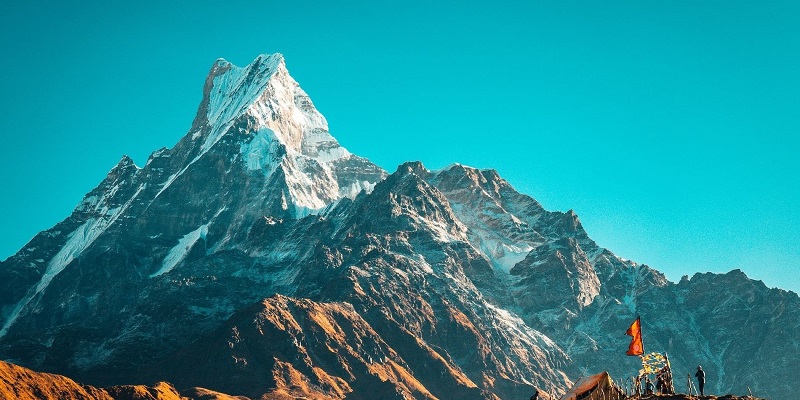
the Himalayas Seasonal Advice
- Spring (March–May): One of the best windows for trekking and mountain views. Rhododendrons bloom in Nepal and forests start to green.
- Autumn (September–November): Another top window — clear skies and stable weather make for excellent views and festivals like Dashain in Nepal.
- Summer/Monsoon (June–August): Heavy rain in Nepal and much of the southern ranges; visibility declines and landslides are frequent—generally not recommended for long treks.
- Winter (December–February): Very cold, many high passes close, but lower-altitude lodging and cultural visits remain possible. Tibet and parts of the Indian Himalaya can be extremely cold with limited road access.
Practical travel tips for the Himalayas
- Acclimatize slowly: Altitude sickness is real. Build rest days into itineraries, especially above 3,000–3,500 meters. Stay well hydrated and consider consulting a travel health professional before you go.
- Pack smart: Layers are essential—warm base layers, a good down jacket, windproof shell and quality walking shoes/boots. Sun protection is necessary at high altitudes (UV is stronger).
- Respect local cultures: The Himalayas are home to Buddhist, Hindu and indigenous traditions. Dress modestly at religious sites, learn simple local greetings, and ask before photographing people.
- Permits and entry rules: Several regions require permits or guided travel (e.g., Bhutan, Tibet). Book with reputable operators who can handle permits and logistics.
- Choose the right tour operator: For high-altitude or cross-border journeys (Tibet–Nepal overland, Kailash kora), an experienced, licensed operator reduces stress and ensures smoother permits, vehicle support and acclimatization planning.
Suggested sample itinerary:
8-day Lhasa → Everest Base Camp (Tibet) classic trip: Lhasa sightseeing (Potala, Jokhang) → Yamdrok Lake → Gyantse → Shigatse → Tingri → Rongbuk/Rongbuk Monastery and northern Everest viewpoints. Best for travelers who want a dramatic high-altitude experience with less trekking.
Responsible travel in the Himalayas
The Himalayas are ecologically fragile and culturally sensitive. Practice Leave No Trace principles on treks, avoid single-use plastics, respect wildlife and sacred sites, and choose operators committed to local employment and fair pay. Sustainable travel helps preserve the region for future visitors and supports mountain communities.
If you’re wondering where to start planning such a trip, China Dragon Travel specializes in Himalayan itineraries across Tibet, Nepal and neighboring regions, from short Everest Base Camp excursions to overland Lhasa–Kathmandu journeys and Mount Kailash pilgrimages. They can tailor routes to your fitness level, travel dates and interests and handle permits, acclimatization pacing, local guides and vehicles so you can focus on the scenery and the experience. For personalized Himalayan itineraries and up-to-date permit support, contact China Dragon Travel to begin planning your trip to the Roof of the World.
Safe travels — may your journey be clear-skied and your views unforgettable.



